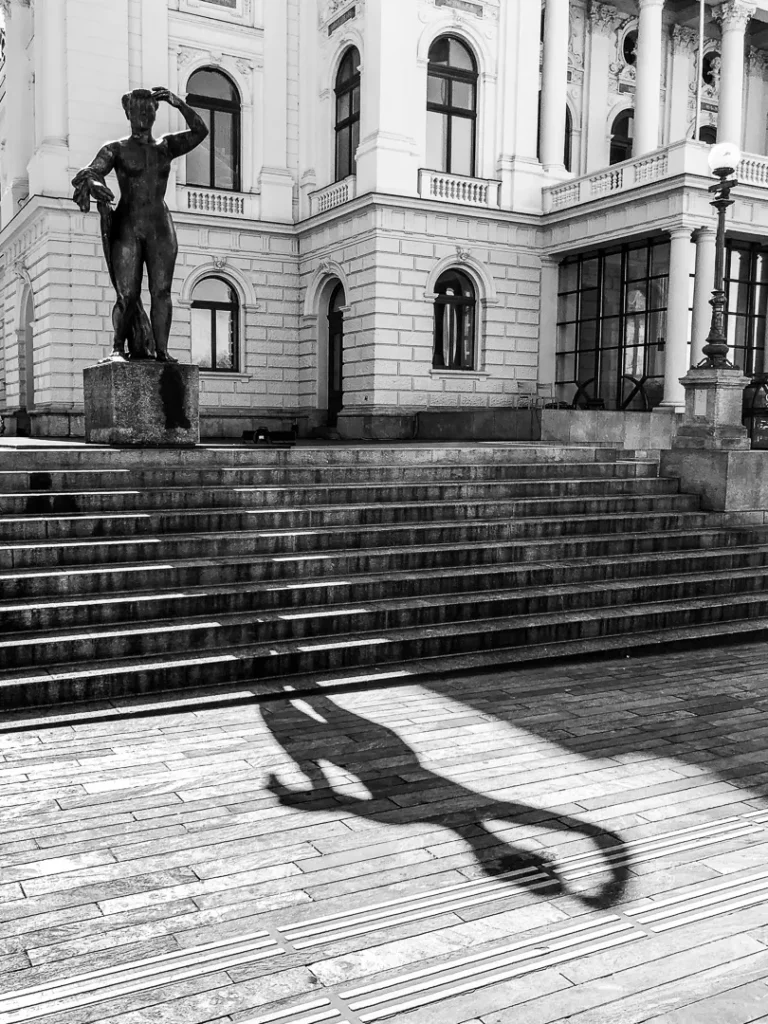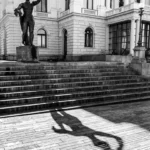There’s something quietly powerful about shadows.
They don’t demand attention. They don’t shout. But in photography, they are often what make an image—what give it depth, tension, and texture. They’re not just the absence of light; they’re a language all their own.
Powerful Shadows
A shadow can be subtle or dramatic, abstract or literal. It can hint at something outside the frame or create a striking shape inside it. In every case, a shadow adds dimension—visually, emotionally, and symbolically.

Without powerful shadows, a photo can feel flat. Even well-lit scenes benefit from shadow’s ability to carve form out of space. It’s the contrast between light and dark that creates mood. That tension between seen and unseen.
Especially in Black & White
In black and white photography, powerful shadows aren’t just a side effect—they’re a central design tool.
Stripped of color, the image relies on contrast, shape, and tone. That’s where shadows shine. They become the brushstrokes that add mystery, elegance, and drama. A simple wall with the shadow of a railing becomes a graphic element. A person’s silhouette cast long at sunset becomes a story in itself.
Shadows in monochrome emphasize structure and emotion without the distraction of hue. They speak directly in light and dark.
Things to Consider When Framing with Shadows
Working with shadows takes attention and intention. Here are a few thoughts I keep in mind when framing a shot:
- Observe the Light Before You Shoot – Shadows are born from light—specifically its direction and quality. Low-angle light (like morning or golden hour) casts longer, softer shadows. Harsh midday sun creates short, sharp ones. Look around before raising the camera. Where’s the shadow falling? Can you reposition for a better composition?
- Let Shadows Lead – Use shadows to guide the viewer’s eye. A diagonal shadow across a floor can create a dynamic line. The shadow of a person can add presence before they even enter the frame.
- Expose for the Mood – If the shadow is your main subject, don’t be afraid to let parts of the image go dark. Use exposure creatively—don’t overcorrect for shadowy areas if it flattens the impact.
- Frame the Suggestion, Not Just the Subject – Sometimes the shadow tells more than the object itself. Try framing the shadow as the focal point. It can be more intriguing than the form that cast it.
- Look for Patterns and Geometry – Shadows often create unexpected repetitions or patterns—think window blinds, fences, tree branches. These can add rhythm to an otherwise simple composition.
Shadows Tell Stories
More than anything, shadows invite imagination. They create space for interpretation. They suggest what’s outside the frame, what’s just out of reach, what might happen next.
That’s why I love working with shadows—especially in black and white. They leave room for the viewer to lean in, to wonder, to feel.
So next time you’re composing a shot, don’t just chase the light. Look for the powerful shadows. That’s where the soul of the image often lives.
